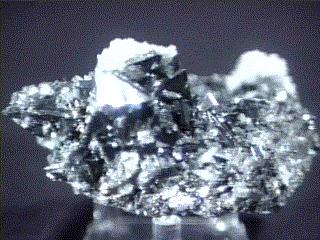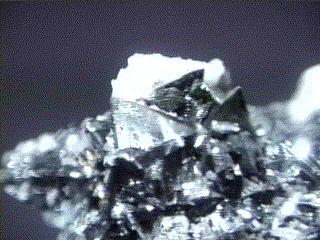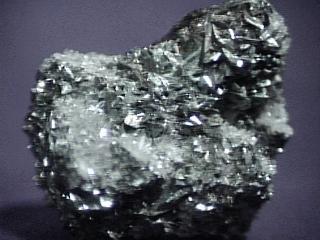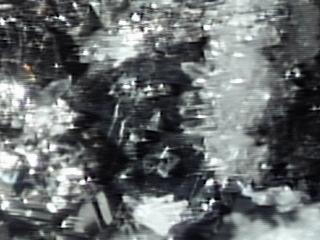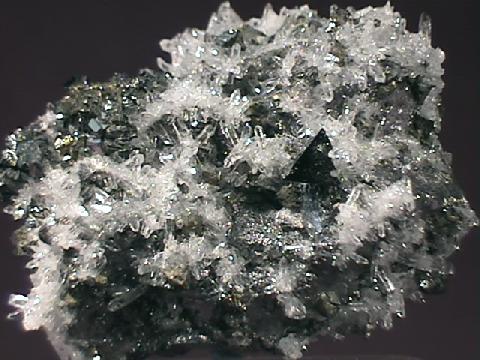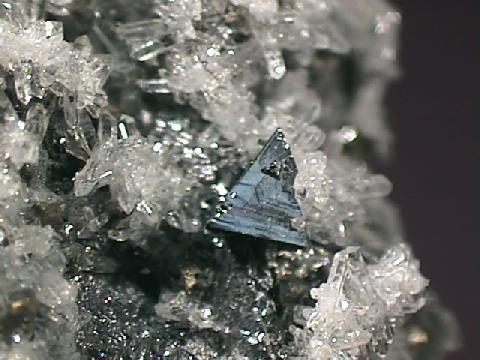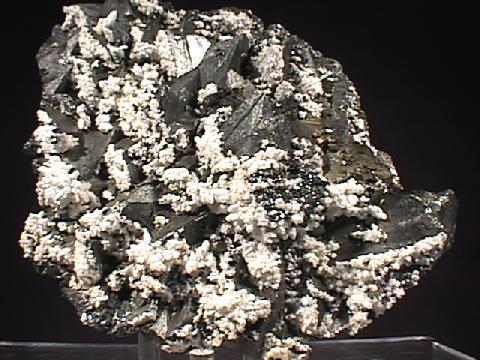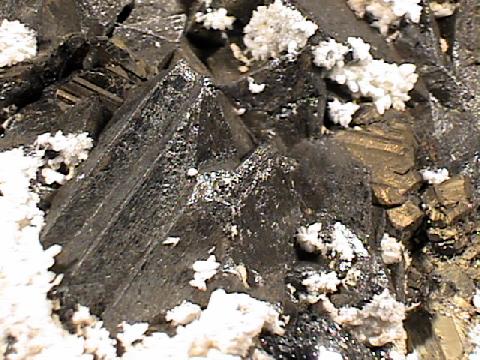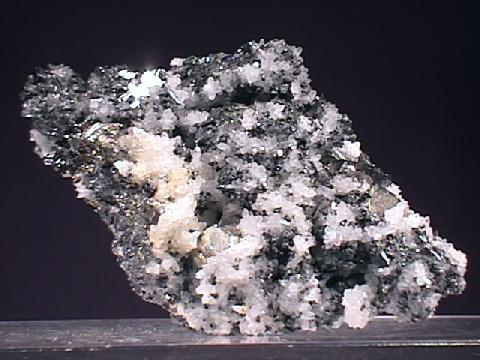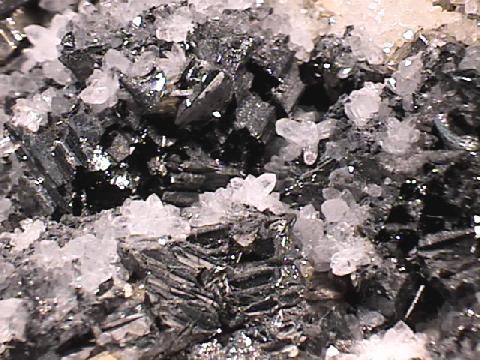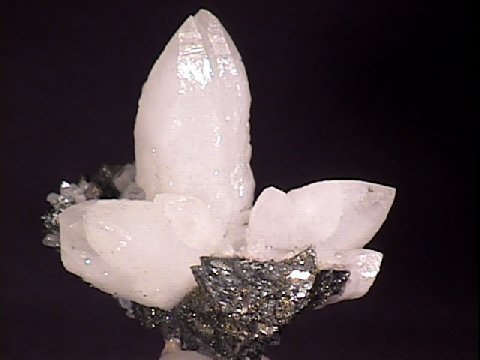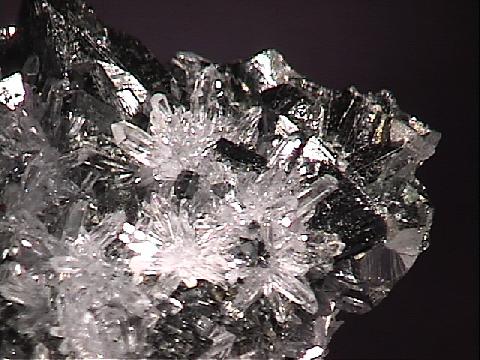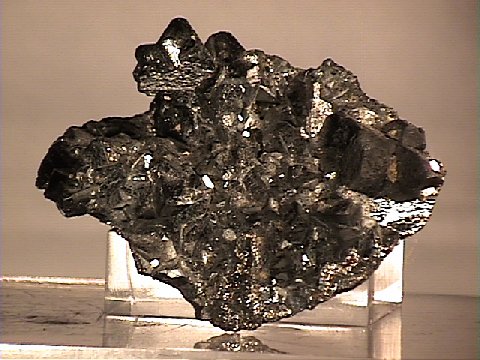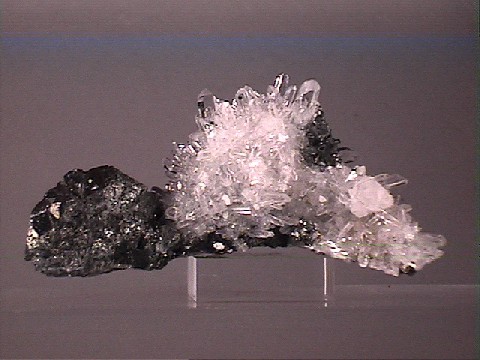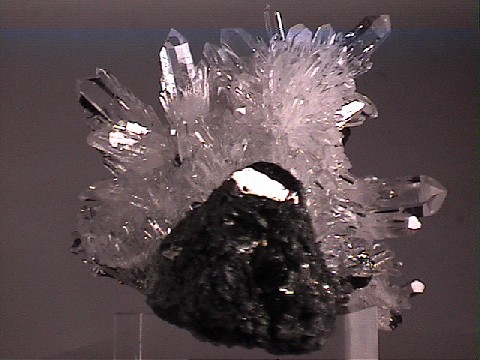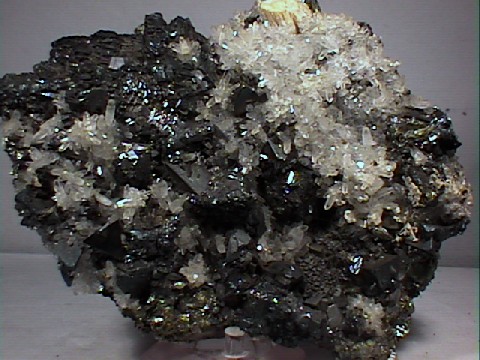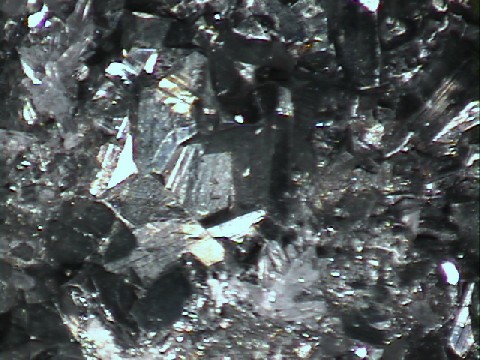 THE MINERAL TETRAHEDRITE
THE MINERAL TETRAHEDRITE
- Chemistry: Cu12Sb4S13, Copper Antimony Sulfide
- Class: Sulfides
- Group: Tetrahedrite
- Uses: ore of copper and as a minor ore of silver.
Specimens
Tetrahedrite is named for its common crystal form, the tetrahedron. The tetrahedron is an interesting isometric crystal form. It is obvious where the four three fold axes of the isometric system belong, as each one exits out of the crystal through each of the four identical "pyramidal" peaks. However the four fold axes are evidently missing. They aren't, they are just four fold rotoinversion axes. A four fold rotoinversion axis takes a face, rotates it 90 degrees (one fourth of a rotation) and then inverts it (up to down & right to left) through the crystal to the other side. Then it rotates it again 90 degrees and inverts it again through the crystal. Another rotoinversion operation and finally another (four in all) and the face is back, exactly where it started. The result is two faces on the "top" and two on the "bottom" of the crystal but in perpendicular orientation. The tetrahedral faces are in many instances modified by other crystal forms giving the crystals multiple facets while still retaining the basic tetrahedral shape.
Tetrahedrite is in an informal group of minerals called the "fahlerz" or "fahlores" group. The group is named for an old german miners word meaning "pale ore". Most members of the tetrahedrite group belong to this informal group.
Tetrahedrite can form interesting and handsome mineral specimens. Often it will contain a certain percentage of silver and be used as a minor ore. The multi-faceted tetrahedral crystals as well as the flat faced simple tetrahedral crystals can be very striking and a real pleasure for mineral collectors to own.
PHYSICAL CHARACTERISTICS:
- Color is black to steel gray to silver.
- Luster is metallic.
- Transparency crystals are opaque.
- Crystal System is isometric; bar 4 3m
- Crystal Habits of course include the tetrahedron sometimes modified by the dodecahedron and tristetrahedron. Twinning is occassionally seen. Also massive and granular.
- Cleavage is absent.
- Fracture is conchoidal.
- Hardness is 3 - 4+.
- Specific Gravity is approximately 4.6 - 5.1 (average for metallic minerals)
- Streak is black to brown.
- Associated Minerals are quartz, pyrite, galena, chalcopyrite and other sulfides.
- Other Characteristics: tarnishes to a greenish shade.
- Notable Occurances include Peru; Broken Hill, Australia; Mexico; Germany and others.
- Best Field Indicators are crystal habit, lack of cleavage and color.





